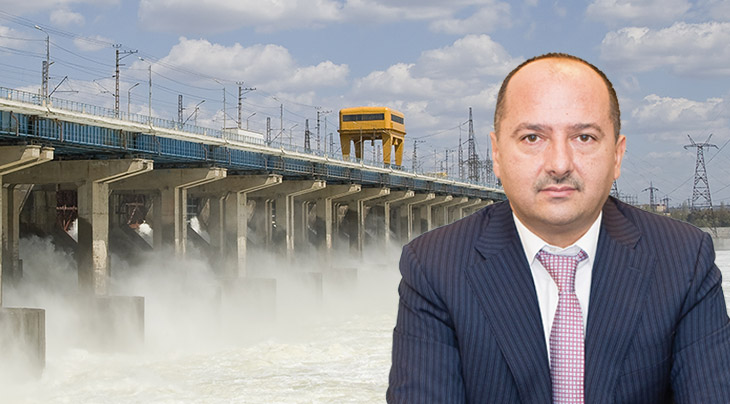Bucharest Court rejected as ungrounded all appeals formulated by energy traders and trade unions against the opening of the insolvency procedure at Hidroelectrica. The restructuring and modernization of the management of the largest electricity producer in Romania can continue, and the perspective of listing on the capital market is again topical. 2014 entered into history as the best year from a financial point of view, with revenues of 3.45 billion lei and a profit of 1.2 billion lei. We discussed about the future of the company with Remus Borza, the architect of Hidroelectrica remodeling, as official receiver, after the entry into insolvency, in 2012.
Mr. Remus Borza, how do you explain the spectacular turnover posted in 2014?
The turnover of 3.45 billion lei is a record not only for the Romanian energy sector, but for the entire economy. This result is even more commendable since it was achieved in a year when Hidroelectrica did not reach the maximum production recorded in 2005 (20.1TWh) or in 2010 (19.8TWh). In 2014, the company had a production of only 18.4TWh, in a market where electricity price has actually collapsed. In 2012, when I took over Hidroelectrica management, the price per MWh was 250-270 lei, and in 2014 the average price was around 160 lei, with an average price of 156 lei (DAM) and 162 lei (PCCB). In other words, with a low production and a lower price, Hidroelectrica managed to register a higher turnover.
In 2011 and 2012, half of the power production was supplied to the population at a price regulated by ANRE, much below the market price, but also much below the production cost. For example, in 2012, we had a cost of 171 lei and a price recognized by ANRE of 71 lei, the market price being 250-270 lei. In conditions in which we supplied 5.6TWh in the regulated market at a price that did not even cover the cost, it’s obvious that we couldn’t make profit.
Add to this the fact that in 2010, 2011 and in the first half of 2012, the other half of the electricity amount produced by Hidroelectrica was delivered under contracts with energy traders, with the „wise guys“, at fixed prices, somewhere between 103 lei and 130 lei, below the market price and below the cost.
During 2012-2014, only from the amount released from contracts with the „wise guys“, Hidroelectrica posted additional revenues of 1.1 billion lei. That’s how we can explain the higher turnover and partially the higher profit.
What are the other sources for profit growth, beyond market liberalization and elimination of detrimental contracts?
The rising profit is the result of cost restructuring measures, taken by the official receiver in the insolvency procedure. 487 detrimental contracts were terminated or renegotiated, thus making them fair and equitable. Most of these contracts were concluded to the detriment of the company, with prices from 3 to 18 times higher than the market average. We are talking about contracts of all types, contracts with equipment suppliers or services, maintenance contracts, upgrade contracts, general contractor and assembly contracts. We are currently working with 183 companies, chosen based on selections allowing fair prices and services for Hidroelectrica, deliveries of quality products and equipment.
We also posted profit through the administrative and territorial reorganization of the company; we closed six branches, in an unthinkable gesture for many, because they were bastions of local barons. At each branch, which had no reason to be established, other than one eminently political, companies of the local elite were subscribed. Until 2012, branch directors could spend up to 10 million euro, without approval from headquarters. First, they were not subsidiaries, but branches, which did not allow them to operate such expenses. Closure of the six branches also meant a resize of the organizational chart, especially in TESA area. In June 2012, we had a share of 39% of TESA staff in total employees, which is a lot for an industrial, production company. From 5,239 employees, in June 2012, we currently reached less than 3,700 employees. For the future, we have a convention with the representative union to continue the reduction of the number of employees by other 200 in the first half of the year, to end 2015 with approximately 3,400 employees.
What was the impact of Hidroserv restructuring?
About 200 companies were only behind the eight Hidroserv.
Once merged, the resulting company started to gain other technical capabilities, to get works which would traditionally go to companies such as Romelectro, Energomontaj, Electroalfa and others. What we did was to reduce the maintenance budget from 100 million euro in 2010 – 2011 – 2012, to 45 million euro, as of 2013. We allocated money only for works provided by Hidroserv, so contracts concluded with subcontractors were terminated. I see no reason why I should give money to other companies, since we have created a company with 2,000 employees, with a unified technical base of equipment and machinery, which can cope with any request from Hidroelectrica.
————————————-
The full version of this article can be read in printed edition of energynomics.ro Magazine, issued on March 2015.
In order to receive the next issue (June 2015) of energynomics.ro Magazine for free, we encourage you to write us at office@energynomics.ro to include you in our distribution list.

